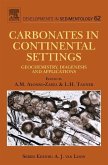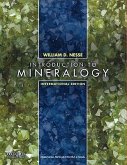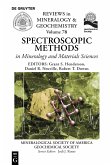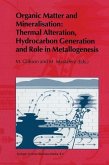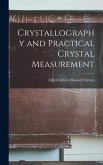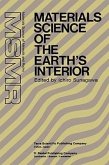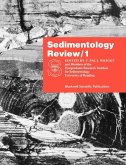George Christakos, Hwa-Lung Yu
Science-Based Spatiotemporal Statistics
Practical Guide with Environmental and Human Exposure Applications
Versandkostenfrei innerhalb Deutschlands
79,99 €
inkl. MwSt.
Versandkostenfrei*
Erscheint vorauss. 17. August 2028
Melden Sie sich
hier
hier
für den Produktalarm an, um über die Verfügbarkeit des Produkts informiert zu werden.

40 °P sammeln
George Christakos, Hwa-Lung Yu
Science-Based Spatiotemporal Statistics
Practical Guide with Environmental and Human Exposure Applications
- Gebundenes Buch
This book provides an introduction to the theoretical development and practical methodology of the so-called science-based spatiotemporal statistics. The book capitalizes on the significance of integrating different knowledge sources (physical, ecological, health, and social) into formal spatiotemporal statistics and provides an array of practical procedures for incorporating these sources into composite space-time analysis, modeling, and estimation/prediction.
Andere Kunden interessierten sich auch für
![Carbonates in Continental Settings Carbonates in Continental Settings]() A. M. Alonso-ZarzaCarbonates in Continental Settings127,99 €
A. M. Alonso-ZarzaCarbonates in Continental Settings127,99 €![Introduction to Mineralogy Introduction to Mineralogy]() William D NesseIntroduction to Mineralogy141,99 €
William D NesseIntroduction to Mineralogy141,99 €![Spectroscopic Methods in Mineralogy and Material Sciences Spectroscopic Methods in Mineralogy and Material Sciences]() Spectroscopic Methods in Mineralogy and Material Sciences84,95 €
Spectroscopic Methods in Mineralogy and Material Sciences84,95 €![Organic Matter and Mineralisation: Thermal Alteration, Hydrocarbon Generation and Role in Metallogenesis Organic Matter and Mineralisation: Thermal Alteration, Hydrocarbon Generation and Role in Metallogenesis]() Organic Matter and Mineralisation: Thermal Alteration, Hydrocarbon Generation and Role in Metallogenesis166,99 €
Organic Matter and Mineralisation: Thermal Alteration, Hydrocarbon Generation and Role in Metallogenesis166,99 €![Crystallography and Practical Crystal Measurement Crystallography and Practical Crystal Measurement]() Alfred Edwin Howard TuttonCrystallography and Practical Crystal Measurement41,99 €
Alfred Edwin Howard TuttonCrystallography and Practical Crystal Measurement41,99 €![Materials Science of the Earth's Interior Materials Science of the Earth's Interior]() SunagawaMaterials Science of the Earth's Interior151,99 €
SunagawaMaterials Science of the Earth's Interior151,99 €![Sedimentology Review 1 Sedimentology Review 1]() VP WrightSedimentology Review 1146,99 €
VP WrightSedimentology Review 1146,99 €-
-
-
This book provides an introduction to the theoretical development and practical methodology of the so-called science-based spatiotemporal statistics. The book capitalizes on the significance of integrating different knowledge sources (physical, ecological, health, and social) into formal spatiotemporal statistics and provides an array of practical procedures for incorporating these sources into composite space-time analysis, modeling, and estimation/prediction.
Produktdetails
- Produktdetails
- Verlag: Taylor & Francis Inc
- Seitenzahl: 350
- Erscheinungstermin: 17. August 2028
- Englisch
- Abmessung: 234mm x 156mm
- ISBN-13: 9781482238037
- ISBN-10: 1482238039
- Artikelnr.: 60010918
- Herstellerkennzeichnung
- Libri GmbH
- Europaallee 1
- 36244 Bad Hersfeld
- gpsr@libri.de
- Verlag: Taylor & Francis Inc
- Seitenzahl: 350
- Erscheinungstermin: 17. August 2028
- Englisch
- Abmessung: 234mm x 156mm
- ISBN-13: 9781482238037
- ISBN-10: 1482238039
- Artikelnr.: 60010918
- Herstellerkennzeichnung
- Libri GmbH
- Europaallee 1
- 36244 Bad Hersfeld
- gpsr@libri.de
George Christakos is a distinguished professor and S.M. Birch Endowed Chair of the Department of Geography at San Diego State University, California, USA. He is also a Yongqian Chair Professor of the College of Environmental and Resource Sciences at Zhejiang University, China. Hwa-Lung Yu is an associate professor of the Department of Bioenvironmental Systems Engineering at National Taiwan University, Taipei.
Introduction. A review of spatiotemporal statistics. Science-based vs.
data-processing statistics. Space-time metrics: Euclidean (spatially
isotropic and non-isotropic). Non-Euclidean (river network, gravity model,
isomap). Spatiotemporal random field theory (S/TRF): Ordinary S/TRF.
Generalized S/TRF. Spatiotemporal statistics of data sets. Standard
two-point statistics: Ordinary covariance and variogram. Generalized
covariance and variogram. Extension to multi-point statistics.
Spatiotemporal exploratory analysis (pattern recognition). Empirical
orthogonal method: Atmospheric and hydrological applications. Dynamic
factor analysis: Ecological and environmental applications. Spatiotemporal
clustering analysis: SaTscan and other works. Spatiotemporal statistics of
differential equations. The analytical approach: Closed form expressions of
physical and biophysical laws. Low- and high-order (diagrammatic)
approximations of groundwater flow. The numerical approach: First order
second moment (FOSM) method. Adjoint method. Spatiotemporal trend analysis.
Non-parametric approaches. The generalized additive model. The Kernel
smoothing method. Spatiotemporal regression.
data-processing statistics. Space-time metrics: Euclidean (spatially
isotropic and non-isotropic). Non-Euclidean (river network, gravity model,
isomap). Spatiotemporal random field theory (S/TRF): Ordinary S/TRF.
Generalized S/TRF. Spatiotemporal statistics of data sets. Standard
two-point statistics: Ordinary covariance and variogram. Generalized
covariance and variogram. Extension to multi-point statistics.
Spatiotemporal exploratory analysis (pattern recognition). Empirical
orthogonal method: Atmospheric and hydrological applications. Dynamic
factor analysis: Ecological and environmental applications. Spatiotemporal
clustering analysis: SaTscan and other works. Spatiotemporal statistics of
differential equations. The analytical approach: Closed form expressions of
physical and biophysical laws. Low- and high-order (diagrammatic)
approximations of groundwater flow. The numerical approach: First order
second moment (FOSM) method. Adjoint method. Spatiotemporal trend analysis.
Non-parametric approaches. The generalized additive model. The Kernel
smoothing method. Spatiotemporal regression.
Introduction. A review of spatiotemporal statistics. Science-based vs.
data-processing statistics. Space-time metrics: Euclidean (spatially
isotropic and non-isotropic). Non-Euclidean (river network, gravity model,
isomap). Spatiotemporal random field theory (S/TRF): Ordinary S/TRF.
Generalized S/TRF. Spatiotemporal statistics of data sets. Standard
two-point statistics: Ordinary covariance and variogram. Generalized
covariance and variogram. Extension to multi-point statistics.
Spatiotemporal exploratory analysis (pattern recognition). Empirical
orthogonal method: Atmospheric and hydrological applications. Dynamic
factor analysis: Ecological and environmental applications. Spatiotemporal
clustering analysis: SaTscan and other works. Spatiotemporal statistics of
differential equations. The analytical approach: Closed form expressions of
physical and biophysical laws. Low- and high-order (diagrammatic)
approximations of groundwater flow. The numerical approach: First order
second moment (FOSM) method. Adjoint method. Spatiotemporal trend analysis.
Non-parametric approaches. The generalized additive model. The Kernel
smoothing method. Spatiotemporal regression.
data-processing statistics. Space-time metrics: Euclidean (spatially
isotropic and non-isotropic). Non-Euclidean (river network, gravity model,
isomap). Spatiotemporal random field theory (S/TRF): Ordinary S/TRF.
Generalized S/TRF. Spatiotemporal statistics of data sets. Standard
two-point statistics: Ordinary covariance and variogram. Generalized
covariance and variogram. Extension to multi-point statistics.
Spatiotemporal exploratory analysis (pattern recognition). Empirical
orthogonal method: Atmospheric and hydrological applications. Dynamic
factor analysis: Ecological and environmental applications. Spatiotemporal
clustering analysis: SaTscan and other works. Spatiotemporal statistics of
differential equations. The analytical approach: Closed form expressions of
physical and biophysical laws. Low- and high-order (diagrammatic)
approximations of groundwater flow. The numerical approach: First order
second moment (FOSM) method. Adjoint method. Spatiotemporal trend analysis.
Non-parametric approaches. The generalized additive model. The Kernel
smoothing method. Spatiotemporal regression.

